...
Blog categories
- Sweet recipes (95) click
- Salty recipes (8) click
- Cooking (27) click
- Seasonal recipe ideas (64) click
- Things to know (21) click
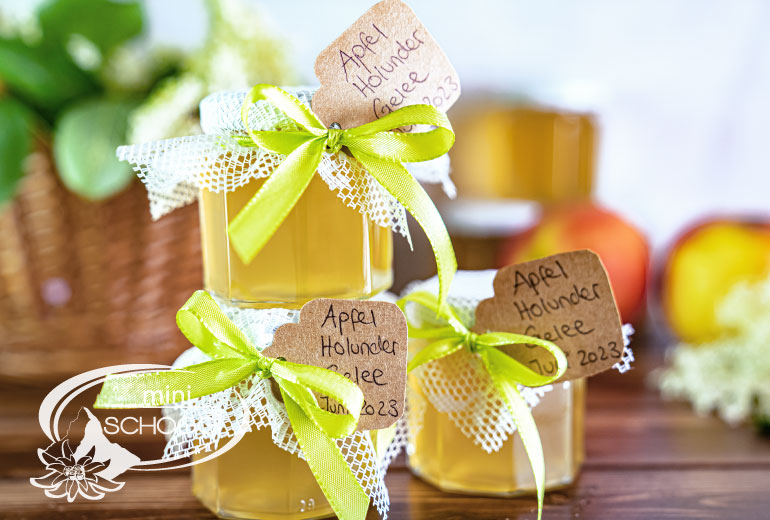
Delicious elderflower jelly with apple juice - a real treat for the senses. The elderflower season is finally here and what better way to enjoy it than in the form of delicious elderflower jelly? The great thing about it: it can be prepared entirely without preserving sugar.
Elderflowers are not only an ornament for the garden, but also a culinary delicacy. The delicately fragrant blossoms are ideal for making syrup, liqueur and jelly. The latter is particularly popular and is easy to make yourself.
Elderflower jelly is particularly delicious when refined with apple juice. The natural flavour of the elderberry is perfectly complemented by the fruity, slightly sour apple juice and gives the jelly a fine note. In addition, the apple juice blends in perfectly with the season and gives the elderflower jelly a summery freshness.
Another advantage: The elderflower jelly can be prepared without preserving sugar. Instead, natural pectin and citric acid are used to make the jelly firm.
Freshly prepared, the elderflower jelly is an absolute treat for the palate. It is perfect as a spread or as an accompaniment to cheese and fish. It also cuts an excellent figure as a sweet note in desserts or ice cream.
In short: elderflower jelly with apple juice is a true taste explosion. It can be enjoyed at any time of year, but especially in the current season of elderflowers it is a must for every epicure. Try it and let yourself be seduced by the incomparable taste of elderflower jelly.
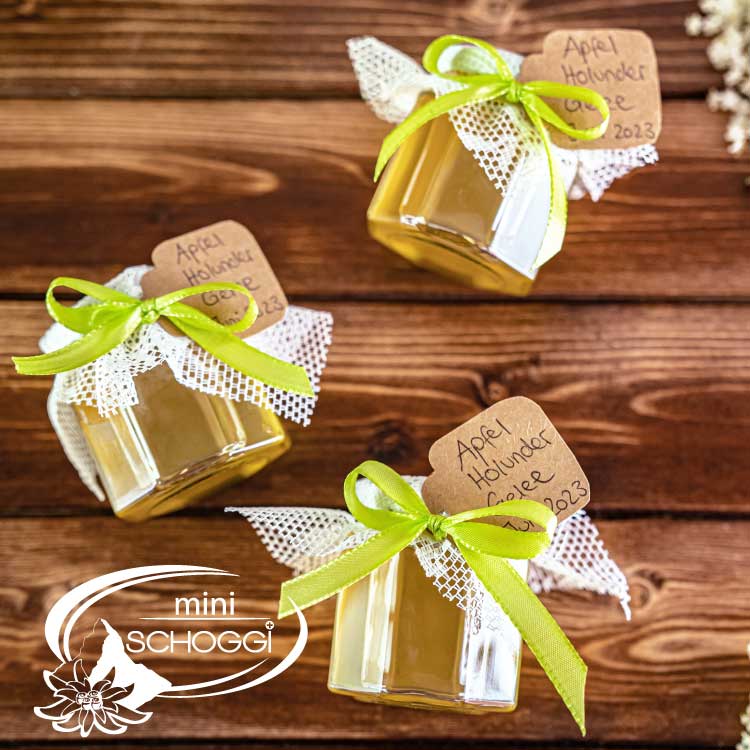
The elderberry blossom harvest takes place mainly in June, because that is when the trees blossom in their full splendour. The fragrant umbels of the elderflowers are not only beautiful to look at, but also true wonders of nature that have many health-promoting properties. More detailed information on elderflowers and their harvesting follows now:
Elderflowers are rich in minerals, vitamins and antioxidants.
The blossoms can be used to strengthen the immune system, for colds and coughs as well as for headaches and fatigue.
Only clean, undamaged cones should be selected for elderflower harvesting. It is best to pick the blossoms along footpaths and in wooded areas, because there the trees are not polluted with fine dust from cars.
The best time to harvest is in early summer, when the blossoms are fully developed and have not yet faded. It is best to harvest the flowers after 2-3 consecutive days of sunshine, as this is when the flowers are at their most mature. Always shake the flowers gently to remove possible crawling insects, but do not wash the cones, otherwise all the pollen will be lost. The flowers should be processed as soon as possible after harvesting.
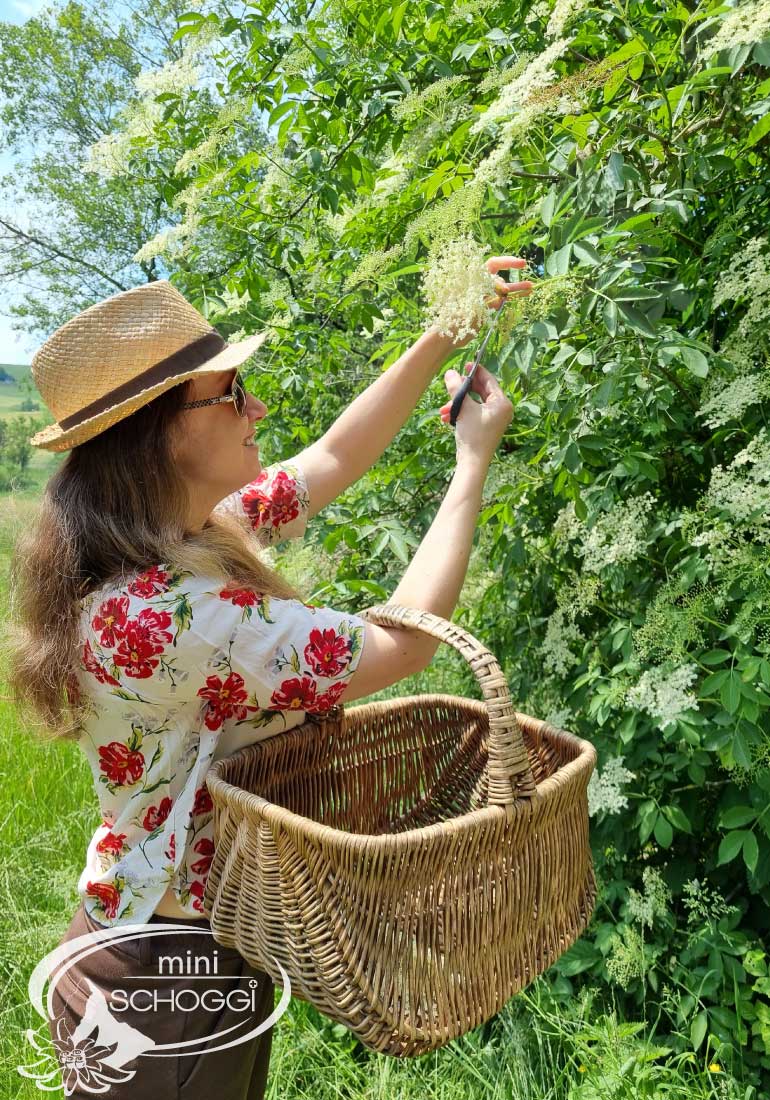
Quantity: 1.75 kg jelly
Cooking time: 5 to 6 minutes
Difficulty: Easy
Shelf life: 1 year
| Water | Part 1 | 250 g | |
| Apple juice | 750 g | |
| Lemon | 1 | |
| Elderflower | large | 20-25 | |
| Granulated sugar | 750 g | |
| Pectin | 35 g | |
| Citric acid | 10 g | |
| Water | Part 2 | 10 g | |
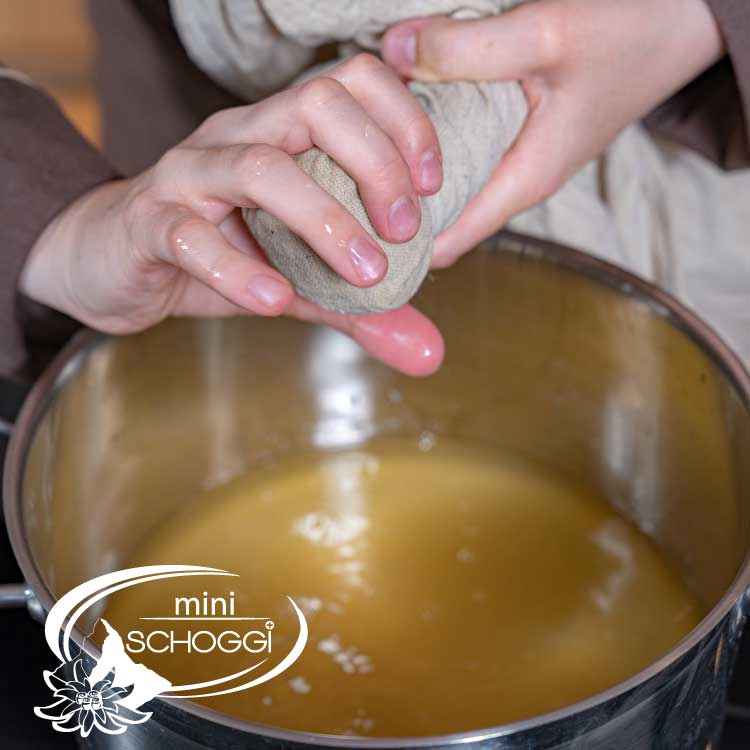
Boil the water, apple juice and the juice of one lemon together briefly, take the pot off the cooker and then add the freshly picked elderflowers. Make sure that you cut off the larger and thicker stems of the flowers (umbels) and leave only the very fine, thin stems. Cover the mixture with a lid and leave the flowers in the liquid for at least 24 hours. The longer you leave the flowers in the liquid, the more intense the elderberry flavour will be.
After the flowers have been in the liquid for a sufficient amount of time, you can drain the flowers. Place a sieve in a large pot, line the sieve with a straining cloth and pour the elderflower mixture into it. If you dampen the cloth beforehand, the straining process will go faster.

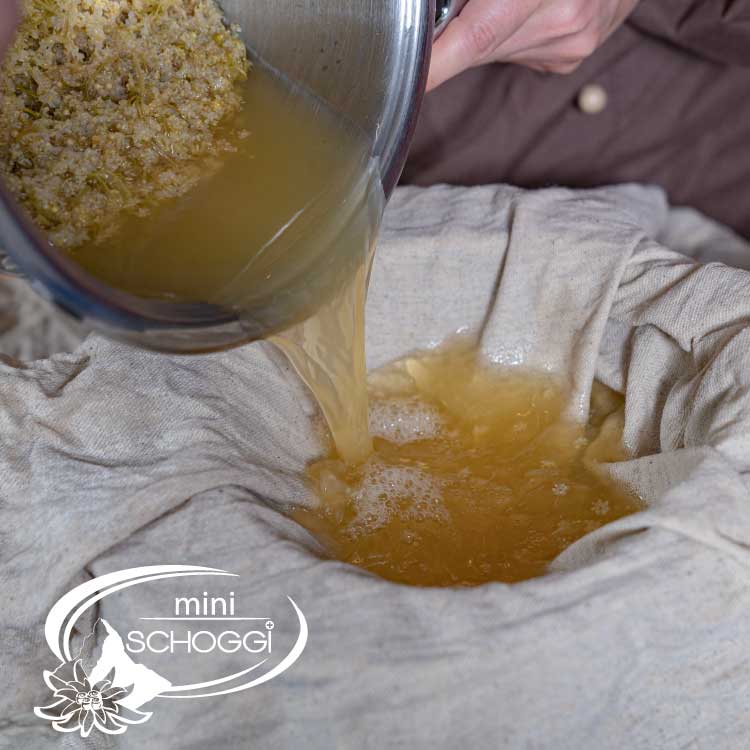
Then take the straining cloth in your hand and wring it out really thoroughly. By using the straining cloth, you can also be sure that any small animals that may still be in the blossoms do not get into the jelly.
In a separate bowl, mix the granulated sugar with the pectin and then add the mixture to the elderflower water. Bring the mixture to the boil while stirring.

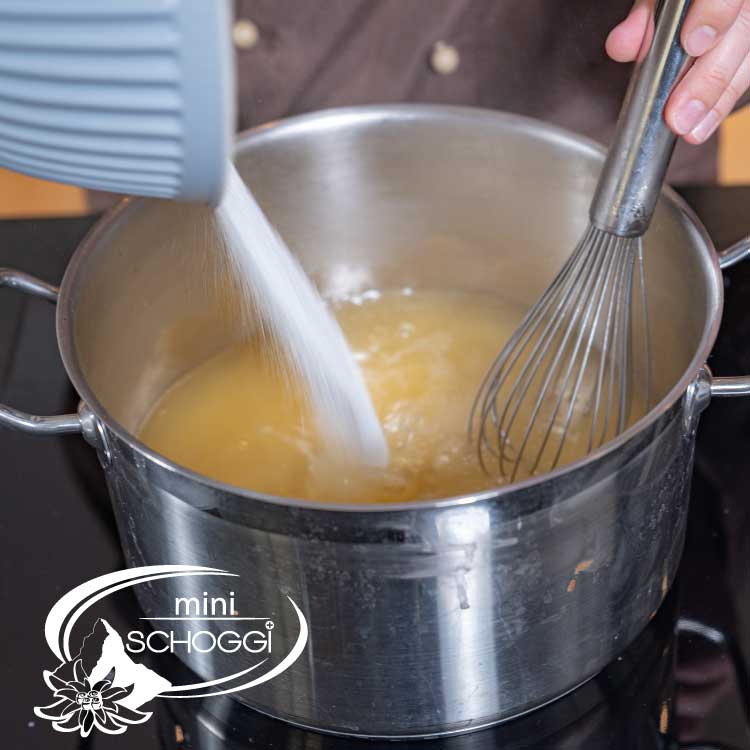
When boiling, a light layer of foam forms on the surface for the first time. To get a nice, clear jelly, we recommend that you skim off this foam with a small fine sieve. Stir the water (part 2) with the citric acid and then stir this into the jelly. Let the jelly boil for a total of 5-6 minutes.
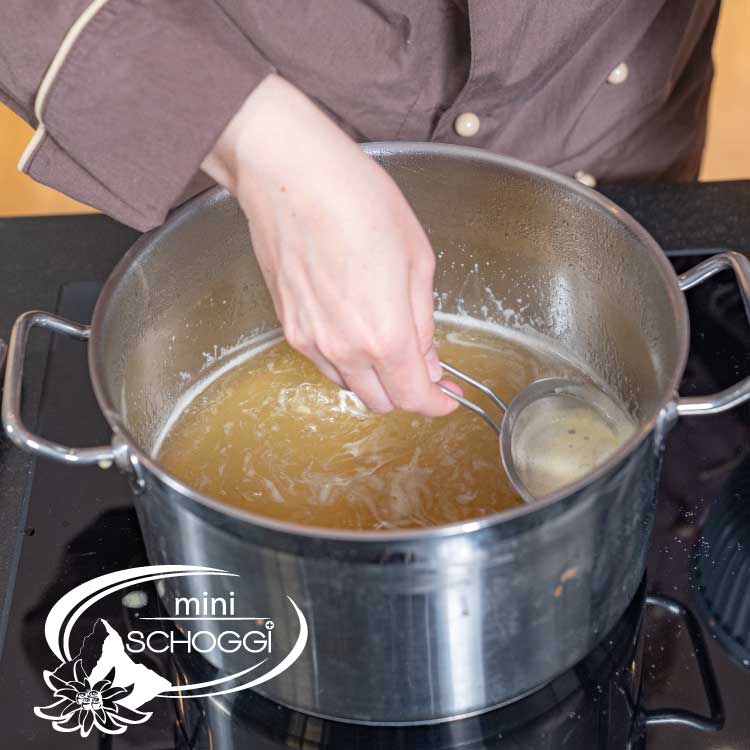
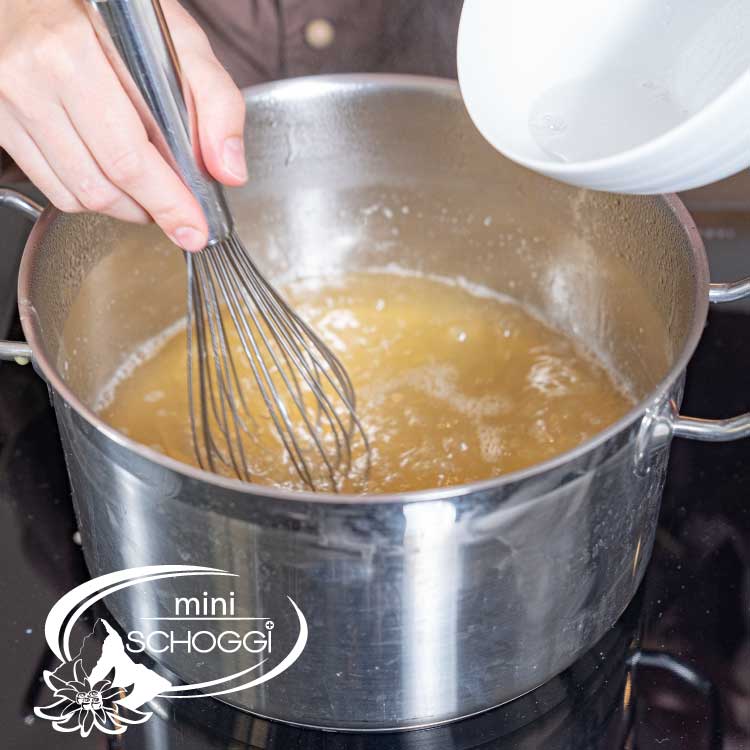
Boil water briefly and fill the jars into which you want to fill the jelly with the hot water. Empty the water back into the pot and then pour the elderflower jelly into the sterilised jars using a funnel. Screw the lids on, turn the jars upside down once and leave them to stand for a short time.
Finally, you can tie a bow around the jars and label them. They make excellent gifts and small souvenirs.
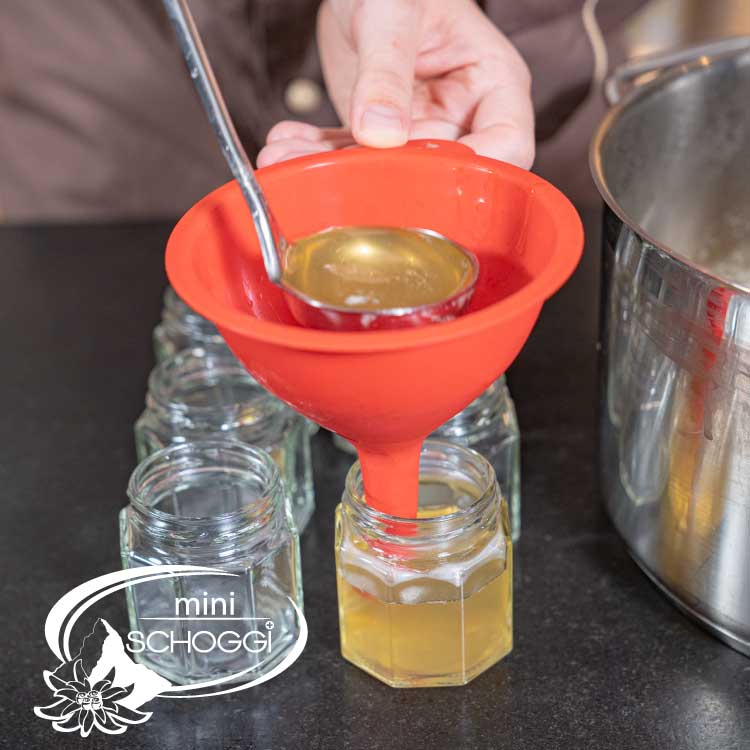
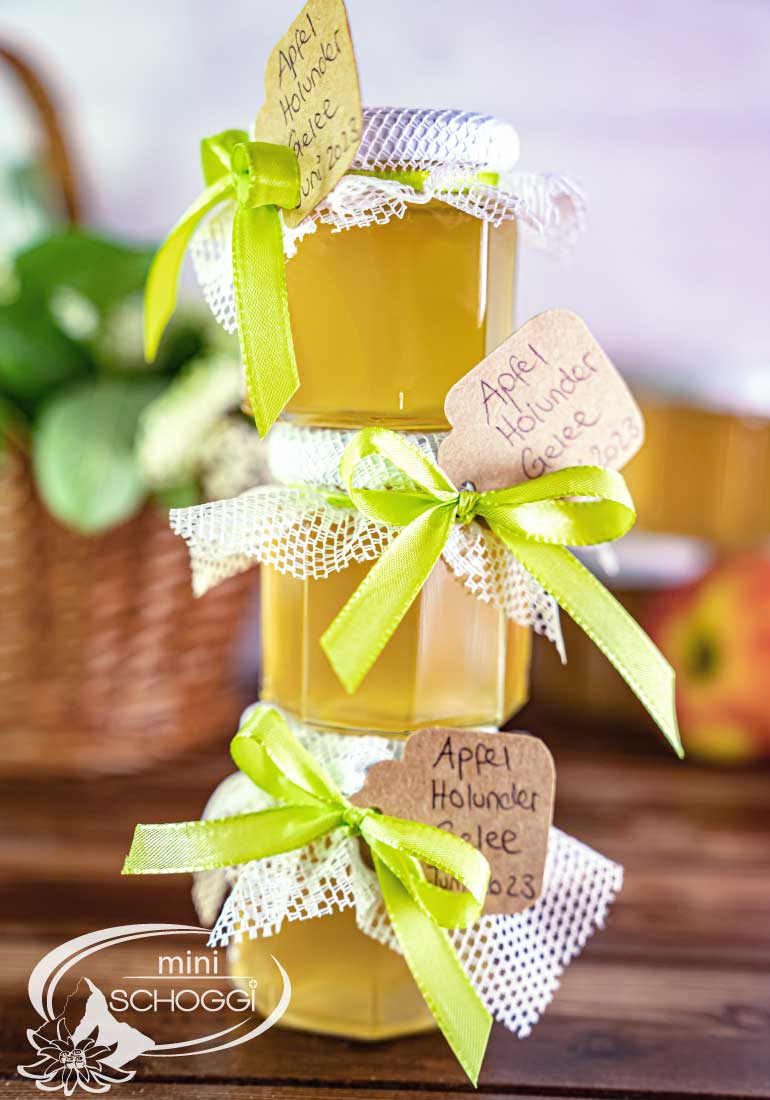
The finished jelly can be kept for up to one year.
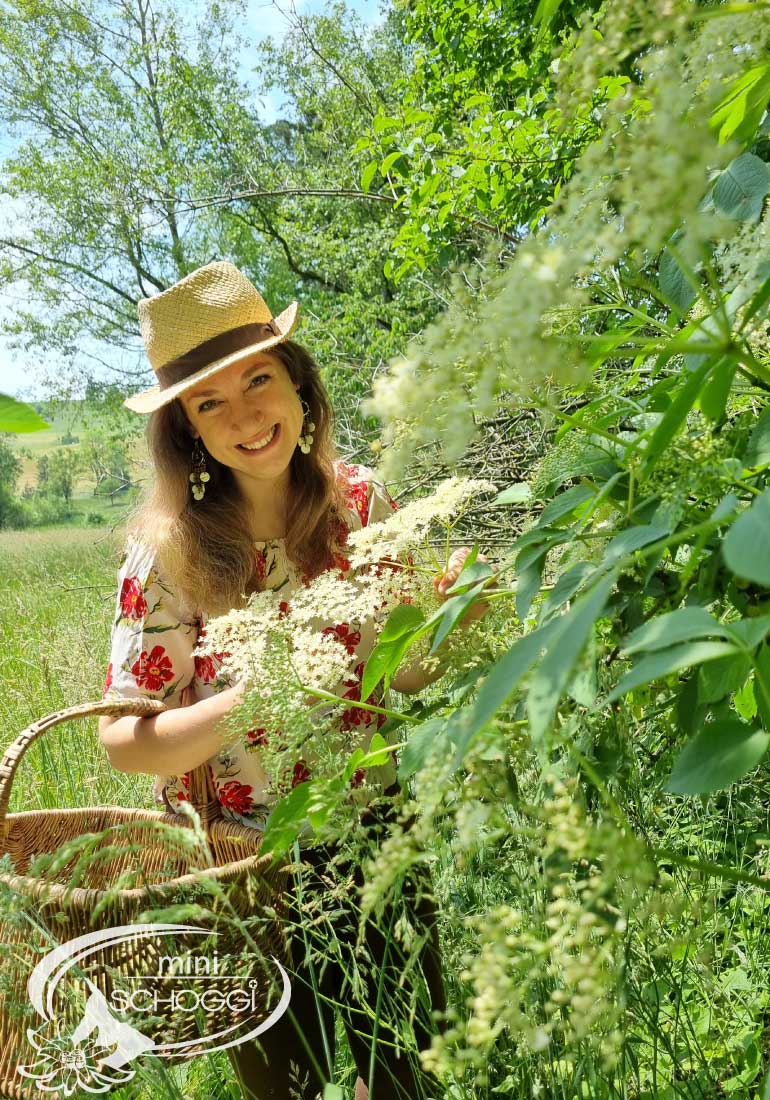
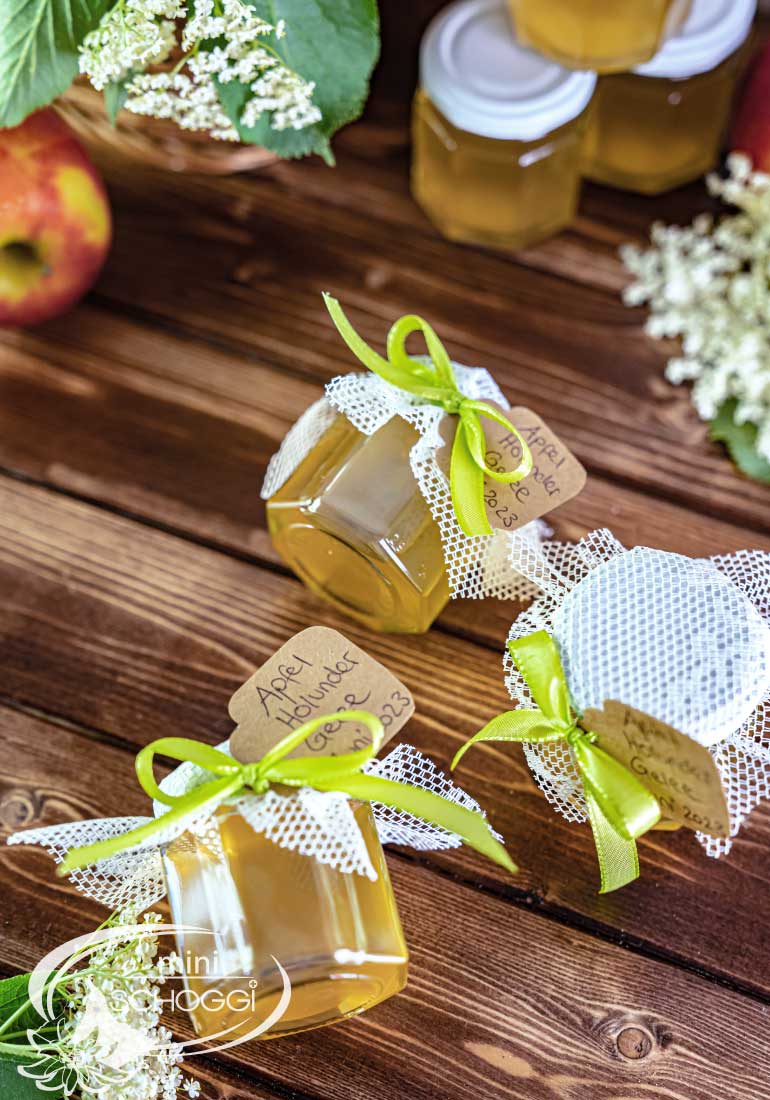
 Casting your own chocolate Easter bunnies
Casting your own chocolate Easter bunnies
 Make your own decor roulade
Make your own decor roulade
 Cinnamon star recipe
Cinnamon star recipe
 Correctly temper couverture and chocolate
Correctly temper couverture and chocolate
 Making Halloween chocolates
Making Halloween chocolates
Leave a comment